Learn Speedball Broad Edge Nibs with Sandro Bonomo
Representing an over century-long tradition for fine pen-making that began in 1899.
Home » Our Product Lines » Calligraphy & Illustration » Get Inspired | Calligraphy » Learn Speedball Broad Edge Nibs with Sandro Bonomo
Jump Right Into Action
Calligraphy is fun and addictive. But for beginners, it can easily feel overwhelming with all the different kinds of nibs. This series created by artist Sandro Bonomo (Instagram @sandro.bonomo)with us will walk you through the basics of broad edge nibs and get you started with Speedball’s A-, B- and C-Series nibs.
Speedball A Series
Patented in 1913 and introduced two years later, the A-Series nib is where it all started for Speedball. Its unique multi-purpose design allows artists to create a variety of strokes with just a flip of the pen. The A-Series nib is ideal for any Gothic or Monoline lettering style that has lines of uniform width with a squared finish. Suitable for use with any straight/classic style penholder.
Speedball A-Series Tech Overview
Speedball A-Series Demo
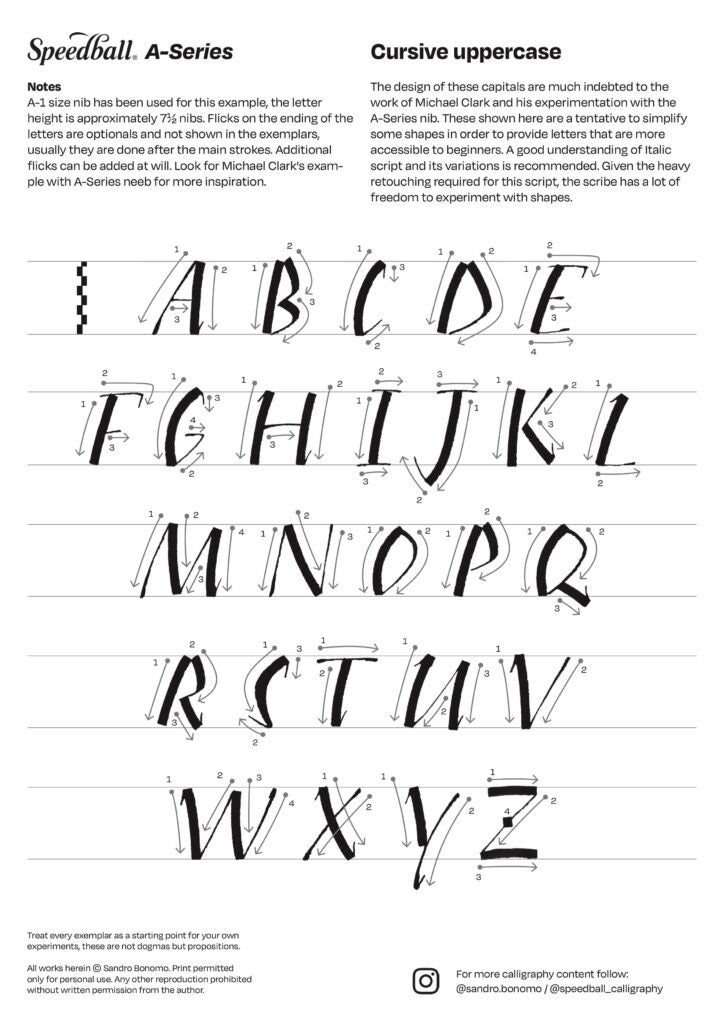
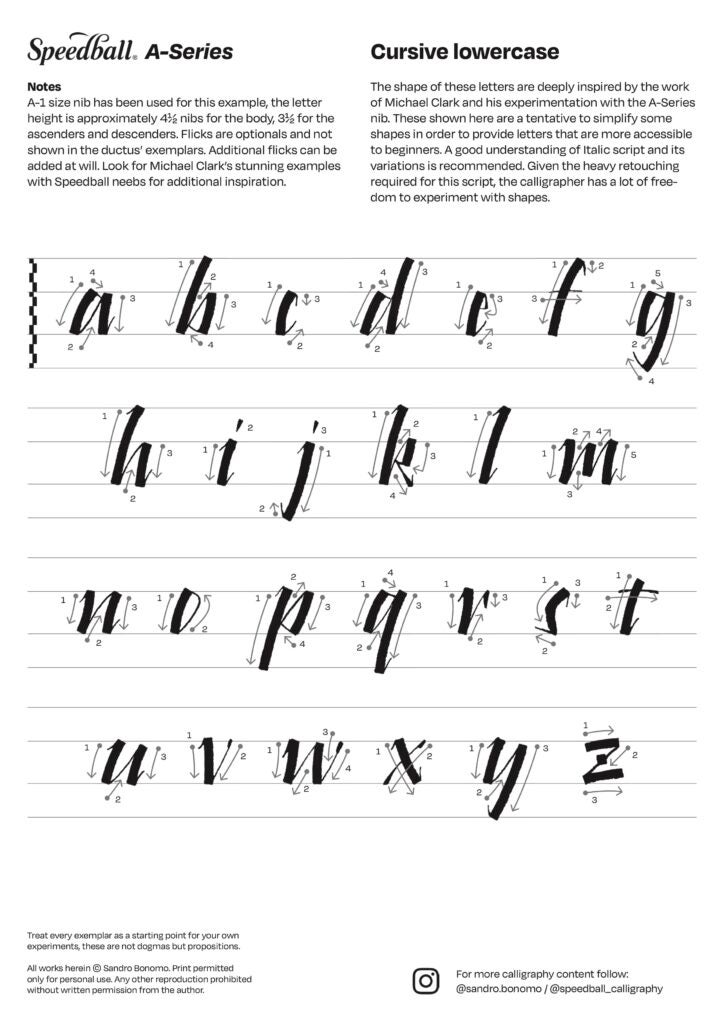

Download A-Series Exemplars
Speedball B Series
The B-Series nib made its debut in the 2nd edition of The Speedball Textbook®, in 1916. Like the A-Series, the B-Series has a bent end to form a “shoe” that can easily produce a uniform width line. Unlike its counterpart, the Speedball B-Series nib has a rounded finish that makes it ideal for creating sans serif letters without thick and thin lines.
Speedball B-Series Tech Overview
Speedball B-Series Demo
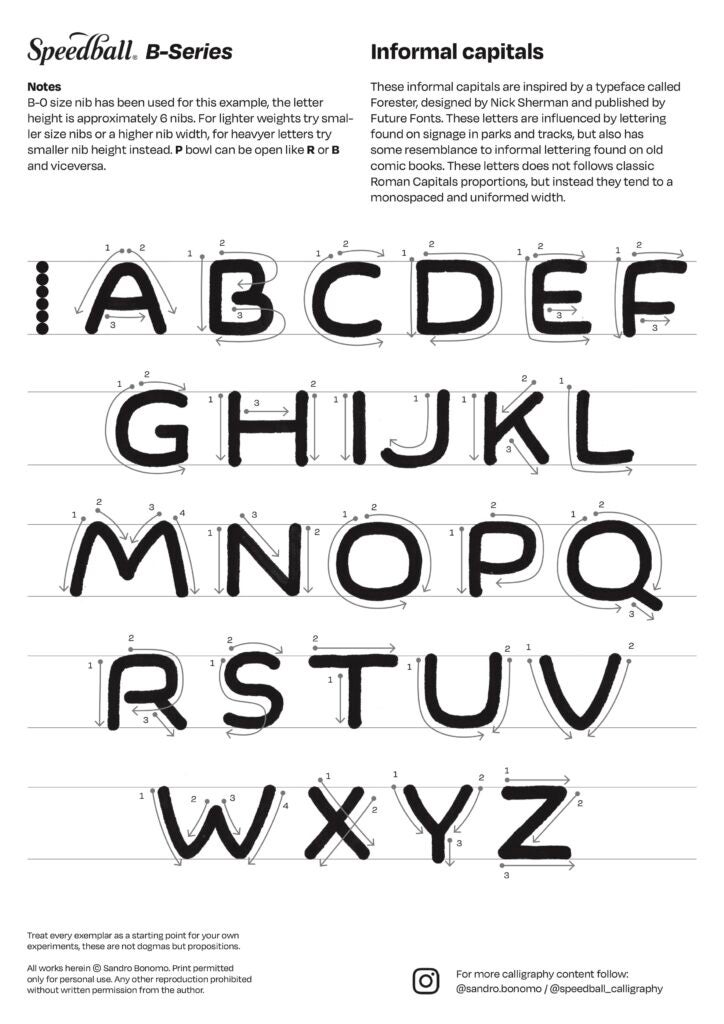
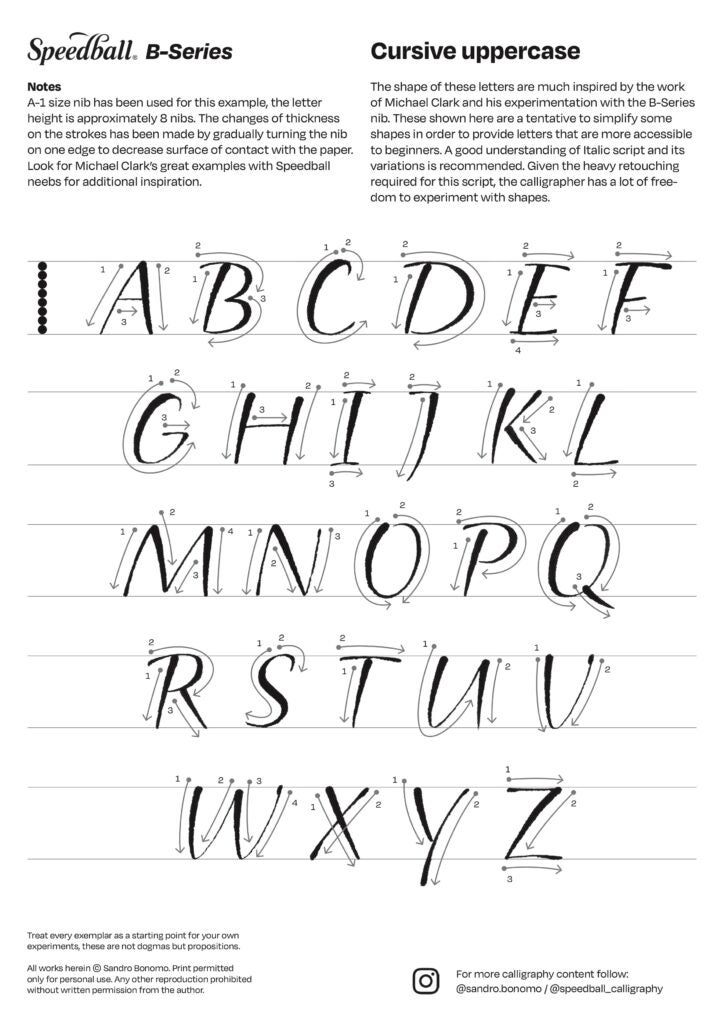
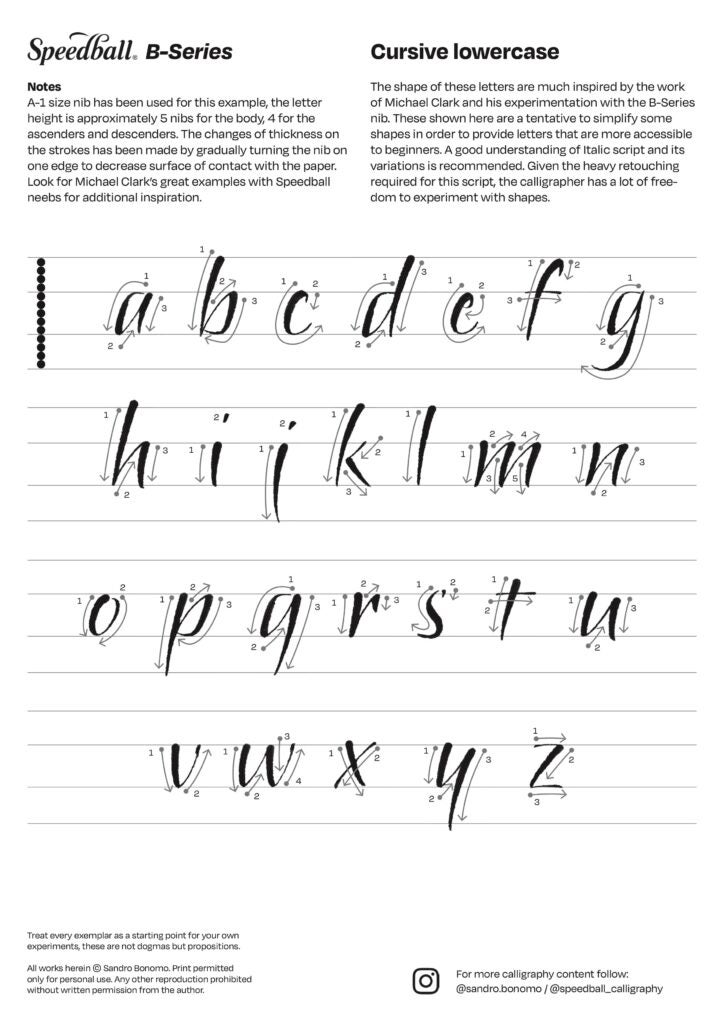
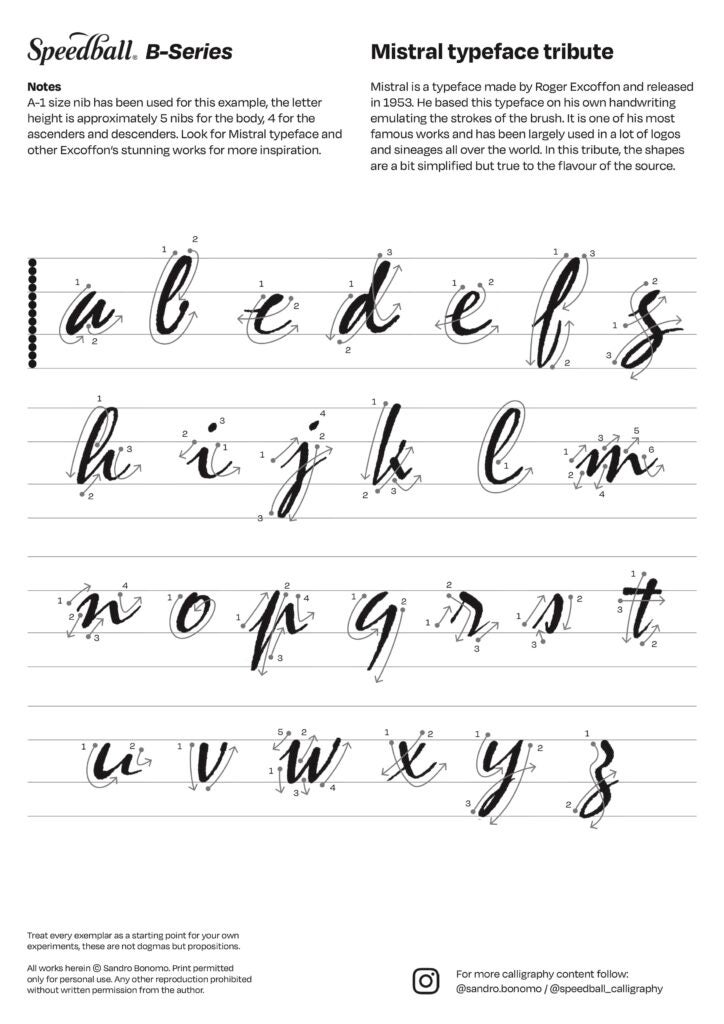
Download B-Series Exemplars
Speedball C Series
The third addition to the Speedball series of pen nibs, the C-Series, was introduced in 1918 in the 4th edition of The Speedball Textbook. This series features a traditional broad edge nib with a great degree of flexibility. Our most popular of the three broad edge offerings, the C-Series nib is meant to be held at a constant angle throughout the creation of any traditional calligraphic alphabet (with minor variations needed, depending upon the lettering style). This consistent angle gives the lettering artist the desired thick and thin strokes usually associated with broad edge calligraphy, such as Roman, Carolingian, Uncial, Italic, Gothicized Italic, Blackletter or Neuland.
Speedball C-Series Tech Overview
Speedball C-Series Demo
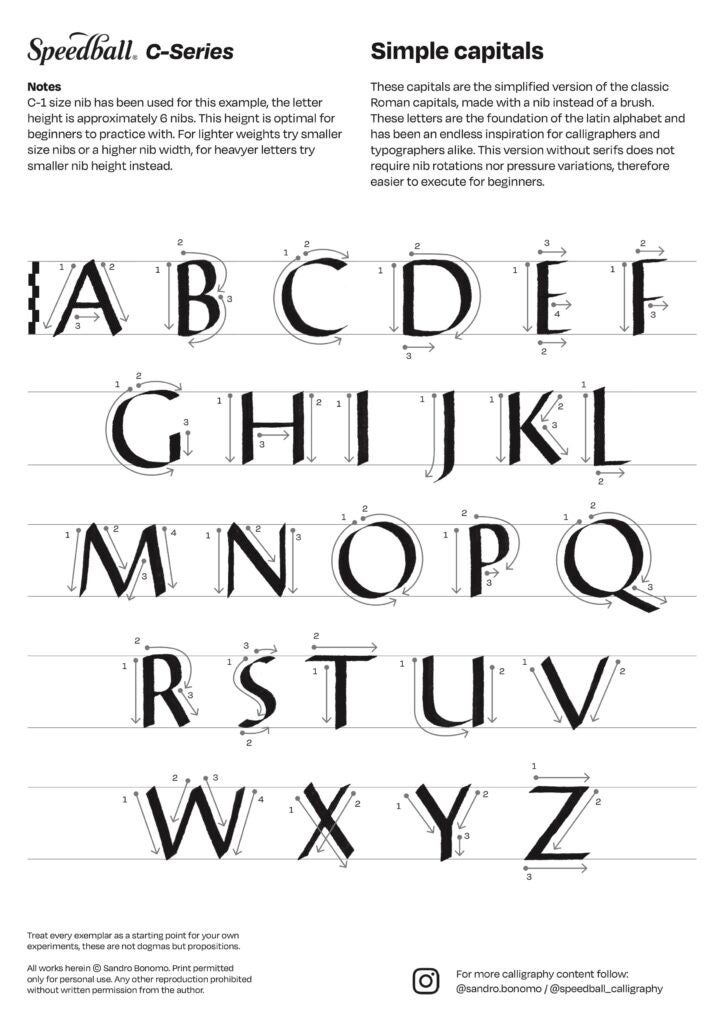
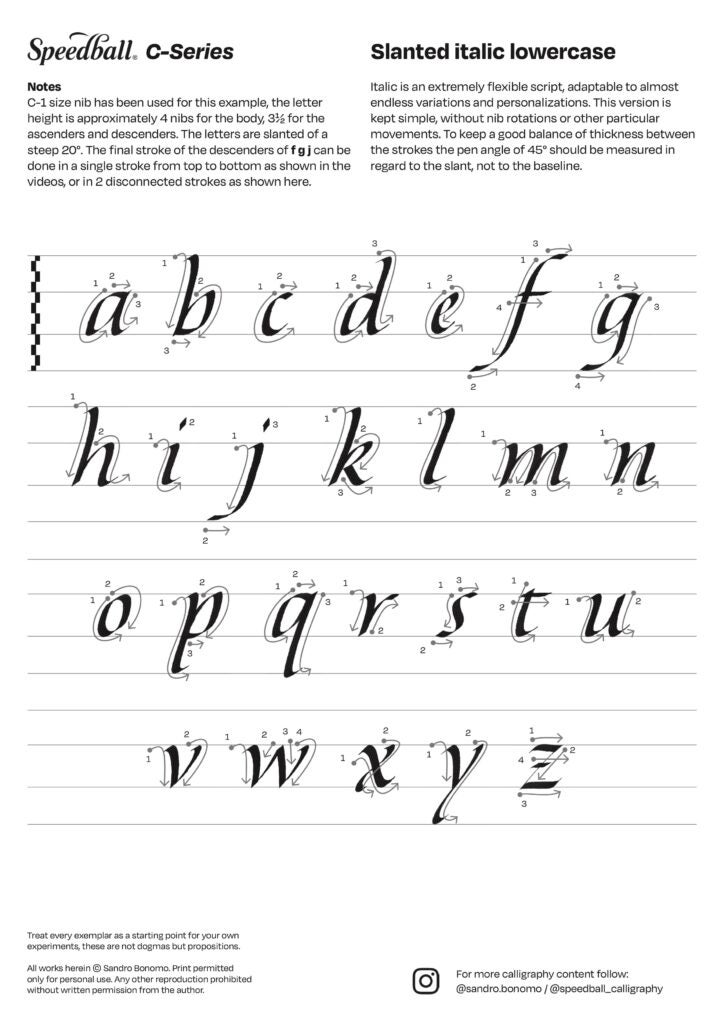
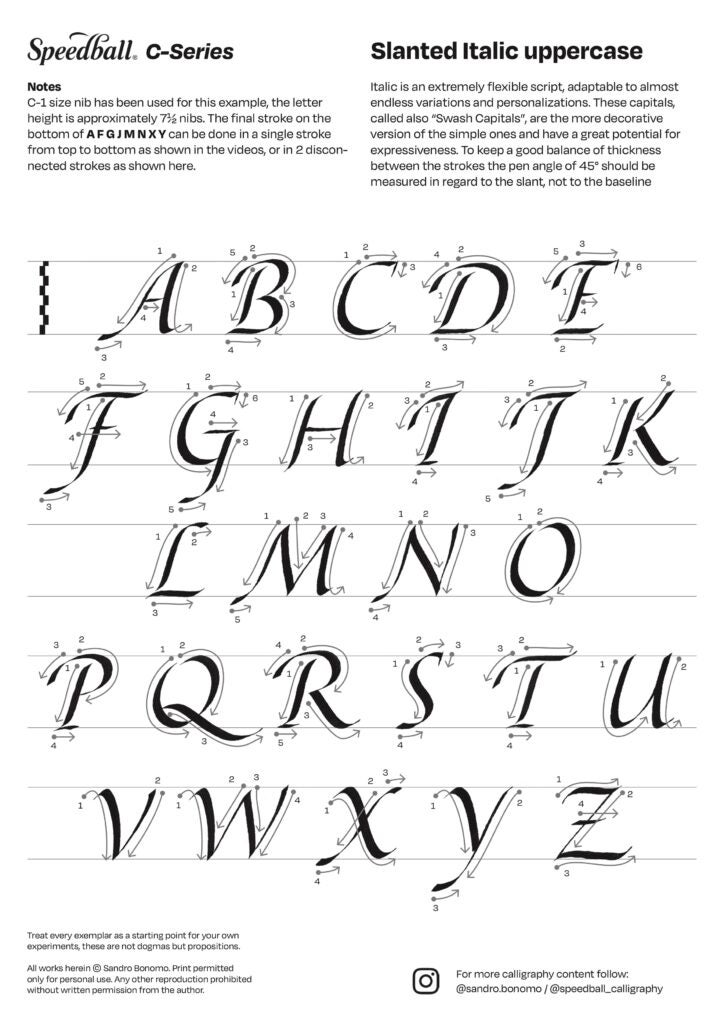
Download C-Series Exemplars
